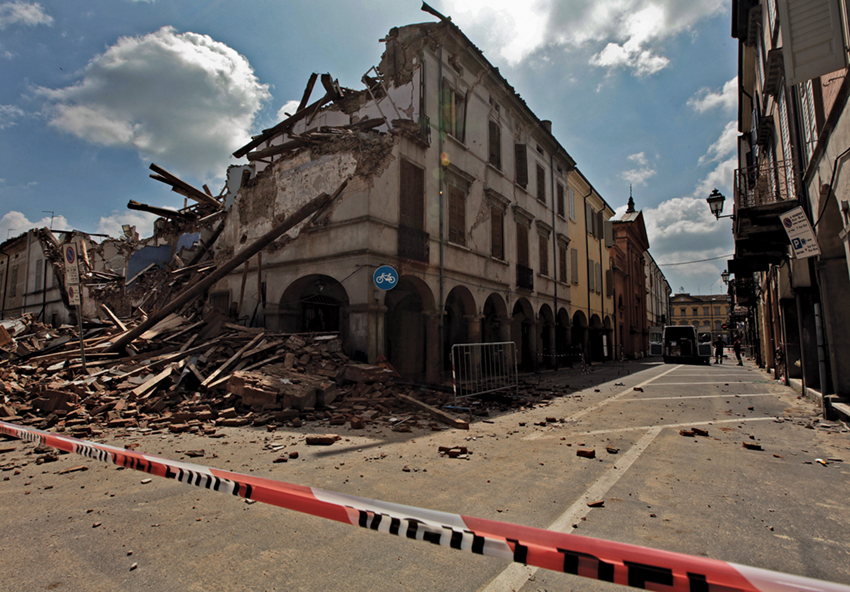The earthquake in Northern Italy

On May 20, 2012, at 4.04 a.m., a powerful earthquake with a magnitude of 5.9 struck Northern Italy. The earthquake primarily affected the provinces of Modena and Ferrara in Emilia, with lesser impacts felt in Bologna and Mantua in Lombardy. The epicenter was located between the municipalities of Finale Emilia and San Felice sul Panaro in the province of Modena and Sermide in the province of Mantua.
Immediately after the earthquake, the Civil Protection Department's crisis unit met to coordinate rescue and aid activities with the affected regions. On May 20th, at 6:00 a.m., the Operational Committee was established, and its continuous session lasted until May 23rd.
Per Law no. 286 of 27 December 2002, the Prime Minister declared an exceptional risk that might compromise primary assets. Consequently, on 22 May, a state of emergency was declared for the Provinces of Ferrara, Modena, Mantua, and Bologna.
The state of emergency lasted for 60 days and was declared by Decree-Law no. 59 of 30 April 2012, which was later converted into Law no. 100 of 12 July 2012. The coordination of interventions was entrusted to the Head of Department.
A new earthquake with a magnitude of 5.8 hit Emilia, Lombardy, and Veneto on May 29 at 9:00 a.m. The epicenter was located between Mirandola, Medolla, and Cavezzo in the province of Modena. This earthquake was particularly severe and challenged the emergency machine, which was operating at full capacity nine days after the first earthquake.
The Head of Department immediately reconvened the Operational Committee, which remained in permanent session until June 2. On this day, the Command and Control Directorate was established in Bologna to coordinate rescue and aid in the areas affected by the earthquakes that occurred on May 20th and 29th. The Emilia-Romagna regional structures were an integral part of this operation. On 30 May, the Council of Ministers decided to extend the state of emergency to the provinces of Reggio Emilia and Rovigo.
A total of 28 people lost their lives. The damage in the territories mainly affected industrial facilities, churches, and historical-cultural heritage, while residential buildings were largely intact. Therefore, during emergency management, special attention was given to ensuring the economic and productive continuity of the affected areas.
Photo: Collapse in Concordia sulla Secchia (Modena) after the earthquake of May 20, 2012